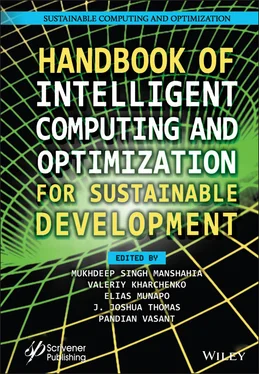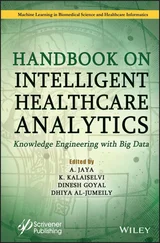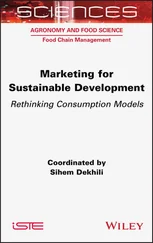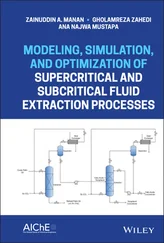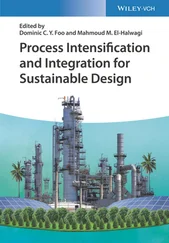1. Jiang, C., Zhang, H., Ren, Y., Han, Z., Chen, K.-C., Hanzo, L., Machine learning paradigms for next-generation wireless networks. IEEE Wireless Commun ., 24, 2, 98–105, 2016.
2. Cousik, T., Shafin, R., Zhou, Z., Kleine, K., Reed, J., Liu, L., CogRF: A New Frontier for Machine Learning and Artificial Intelligence for 6G RF Systems, arXiv preprint arXiv:1909.06862 , 2019.
3. Nathan West, Ben Hilburn, and Tim O’Shea, Machine learning modems: how ML will change how we specify and design next generation communication systems , IEEE ComSoc Tech News, 2018. https://www.comsoc.org/publications/ctn/machine-learning-modems-how-ml-will-change-how-we-specify-and-design-next-generation
4. Madhow, U., Notes from Machine Learning: A Signal Processing Perspective, in: Lecture notes spring-2020 , University of California, Santa Barbara, 2020.
5. Zhu, G., Liu, D., Du, Y., You, C., Zhang, J., Huang, K., Toward an intelligent edge: wireless communication meets machine learning. IEEE Commun. Mag ., 58, 1, 19–25, 2020.
6. O’Shea, T. and Hoydis, J., An introduction to deep learning for the physical layer. IEEE Trans. Cognit. Commun. Networking , 3, 4, 563–575, 2017.
7. DeepSig, Radioml dataset . [Online] Available: https://www.deepsig.ai/datasets, 2018, Jun.
8. H. He, C. Wen, S. Jin and G. Y. Li, “Model-Driven Deep Learning for MIMO Detection,” in IEEE Transactions on Signal Processing , vol. 68, pp. 1702–1715, 2020, doi: 10.1109/ TSP.2020.2976585.
9. Huang, H., Song, Y., Yang, J., Gui, G., Adachi, F., Deep-learning-based millimeter-wave massive MIMO for hybrid precoding. IEEE Trans. Veh. Technol ., 68, 3, 3027–3032, 2019.
10. Ren, Jinke, Guanding Yu, and Guangyao Ding. “Accelerating DNN training in wireless federated edge learning systems.” IEEE Journal on Selected Areas in Communications , 39, 1, 219–232, 2020.
11. Chen, Mingzhe, et al . “Artificial neural networks-based machine learning for wireless networks: A tutorial.” IEEE Communications Surveys & Tutorials , 21, 4, 3039–3071, 2019.
12. Parvez, I., Rahmati, A., Guvenc, I., Sarwat, A.I., Dai, H., A survey on low latency towards 5G: RAN, core network and caching solutions. IEEE Commun. Surv. Tutorials , 20, 4, 3098–3130, 2018.
13. Yang, P., Xiao, Y., Xiao, M., Li, S., 6G Wireless communications: Vision and potential techniques. IEEE Network , 33, 4, 70–75, 2019.
14. Chakareski, J., Naqvi, S., Mastronarde, N., Xu, J., Afghah, F., Razi, A., An energy efficient framework for UAV-assisted millimeter wave 5G heterogeneous cellular networks. IEEE Trans. Green Commun. Networking , 3, 1, 37–44, 2019.
15. Alkhateeb, A., Mo, J., Gonzalez-Prelcic, N., Heath, R.W., MIMO precoding and combining solutions for millimeter-wave systems. IEEE Commun. Mag ., 52, 12, 122–131, 2014.
16. Tariq, Faisal, et al . “A speculative study on 6G.” IEEE Wireless Communications , 27, 4, 118–125, 2020.
17. Sun, Y., Peng, M., Zhou, Y., Huang, Y., Mao, S., Application of machine learning in wireless networks: Key techniques and open issues. IEEE Commun. Surv. Tutorials , 21, 4, 3072–3108, 2019.
18. Cheng, X., Liu, D., Wang, C., Yan, S., Zhu, Z., Deep learning-based channel estimation and equalization scheme for FBMC/OQAM systems. IEEE Wireless Commun. Lett ., 8, 3, 881–884, 2019.
19. O’Shea, T.J., Corgan, J., Clancy, T.C., Convolutional radio modulation recognition networks, in: International conference on engineering applications of neural networks , 2016.
20. Wen, C.-K., Shih, W.-T., Jin, S., Deep learning for massive MIMO CSI feedback. IEEE Wireless Commun. Lett ., 7, 5, 748–751, 2018.
21. Boutaba, R., Salahuddin, M.A., Limam, N., Ayoubi, S., Shahriar, N., Estrada-Solano, F., Caicedo, O.M., A comprehensive survey on machine learning for networking: evolution, applications and research opportunities. J. Internet Serv. Appl ., 9, 1, 16, 2018.
22. N. Farsad and A. Goldsmith,“Neural network detectors for sequence detection in communication systems,” IEEE Trans. Signal Process ., vol. 66, no. 21, pp. 5663–5678, 1 Nov. 1, 2018.
23. Szegedy, C., Liu, W., Jia, Y., Sermanet, P., Reed, S., Anguelov, D., Erhan, D., Vanhoucke, V., Rabinovich, A., Going deeper with convolutions, in: Proceedings of the IEEE conference on computer vision and pattern recognition , 2015.
24. Samek, W., Stanczak, S., Wiegand, T., The convergence of machine learning and communications, arXiv preprint arXiv:1708.08299 , 2017. https://arxiv.org/abs/1708.08299?context=cs.NI
25. Azzouz, E. and Nandi, A., Procedure for automatic recognition of analogue and digital modulations. IEE Proc.-Commun ., 143, 5, 259–266, 1996.
26. Goodfellow, I., Bengio, Y., Courville, A., Bengio, Y., Deep learning , vol. 1, MIT press, Cambridge, 2016.
27. Dobre, O.A., Signal identification for emerging intelligent radios: Classical problems and new challenges. IEEE Instrum. Meas. Mag ., 18, 2, 11–18, 2015.
28. Hazza, A., Shoaib, M., Alshebeili, S.A., Fahad, A., An overview of feature-based methods for digital modulation classification, in: 2013 1st International Conference on Communications, Signal Processing, and their Applications (ICCSPA) , 2013.
29. Zhang, J., Li, Y., Yin, J., Modulation classification method for frequency modulation signals based on the time–frequency distribution and CNN. IET Radar Sonar Navig ., 12, 2, 244–249, 2017.
30. Li, X., Dong, F., Zhang, S., Guo, W., A survey on deep learning techniques in wireless signal recognition. Wireless Commun. Mobile Comput ., 2019, 5629572, 2019. https://doi.org/10.1155/2019/5629572
31. Mendis, G.J., Wei-Kocsis, J., Madanayake, A., Deep learning based radio-signal identification with hardware design. IEEE Trans. Aerosp. Electron. Syst ., 55, 5, 2516–2531, 2019.
32. Eisen, M., Zhang, C., Chamon, L.F., Lee, D.D., Ribeiro, A., Learning optimal resource allocations in wireless systems. IEEE Trans. Signal Process ., 67, 10, 2775–2790, 2019.
33. You, C., Huang, K., Chae, H., Kim, B.-H., Energy-efficient resource allocation for mobile-edge computation offloading. IEEE Trans. Wireless Commun ., 16, 3, 1397–1411, 2016.
34. Yadav, S.S., Lopes, P.A.C., Ilic, A., Patra, S.K., Hungarian algorithm for subcarrier assignment problem using GPU and CUDA. Int. J. Commun. Syst ., 32, 4, e3884, 2019.
35. Rajatheva, N., Atzeni, I., Bicais, S., Bjornson, E., Bourdoux, A., Buzzi, S., D’Andrea, C., Dore, J.-B., Erkucuk, S., Fuentes, M., others, Scoring the terabit/s goal: Broadband connectivity in 6G, arXiv preprint arXiv:2008.07220 , 2020. https://arxiv.org/abs/2008.07220
36. Ahmed, I. and Khammari, H., Joint machine learning based resource allocation and hybrid beamforming design for massive mimo systems, in: 2018 IEEE Globecom Workshops (GC Wkshps) , 2018.
37. Zhou, Y., Fadlullah, Z.M., Mao, B., Kato, N., A deep-learning-based radio resource assignment technique for 5G ultra dense networks. IEEE Network , 32, 6, 28–34, 2018.
38. Wang, J.-B., Wang, J., Wu, Y., Wang, J.-Y., Zhu, H., Lin, M., Wang, J., A machine learning framework for resource allocation assisted by cloud computing. IEEE Network , 32, 2, 144–151, 2018.
39. Zhang, J., Xie, N., Zhang, X., Yue, K., Li, W., Kumar, D., Machine learning based resource allocation of cloud computing in auction. Comput. Mater. Continua , 56, 1, 123–135, 2018.
40. Jeon, Y.-S., Hong, S.-N., Lee, N., Blind detection for MIMO systems with low-resolution ADCs using supervised learning, in: 2017 IEEE International Conference on Communications (ICC) , 2017.
Читать дальше
